Idea by
Jana Čulek
Call for ideas 2016
A Flat Tale
A Flat Tale
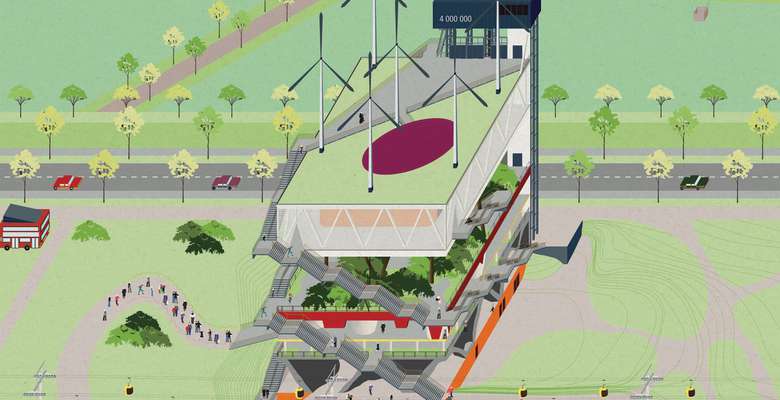
The story has become an essential part of the project. Architecture has come to the point that the main measurement of success for projects is their compelling concept, which manifests itself through the narrative. This project problematizes the architectural narrative. Can one successfully convey an architectural idea, which is inherently visual, only through text?
By approaching architectural representation through both its lexical and visual qualities I have distilled 3 categories: the diagram and the emblematic object, the architectural design project and its narrative and the architectural essay. They represent 3 levels of complexity of architectural representation and 3 steps in the maturation of narratives and architectural projects. Based on the investigation of Dutch architectural projects and narratives, and the ways in which they are most often represented, they represent the symbols, a depiction,reflection and a story of the construct of the good life in the Netherlands.
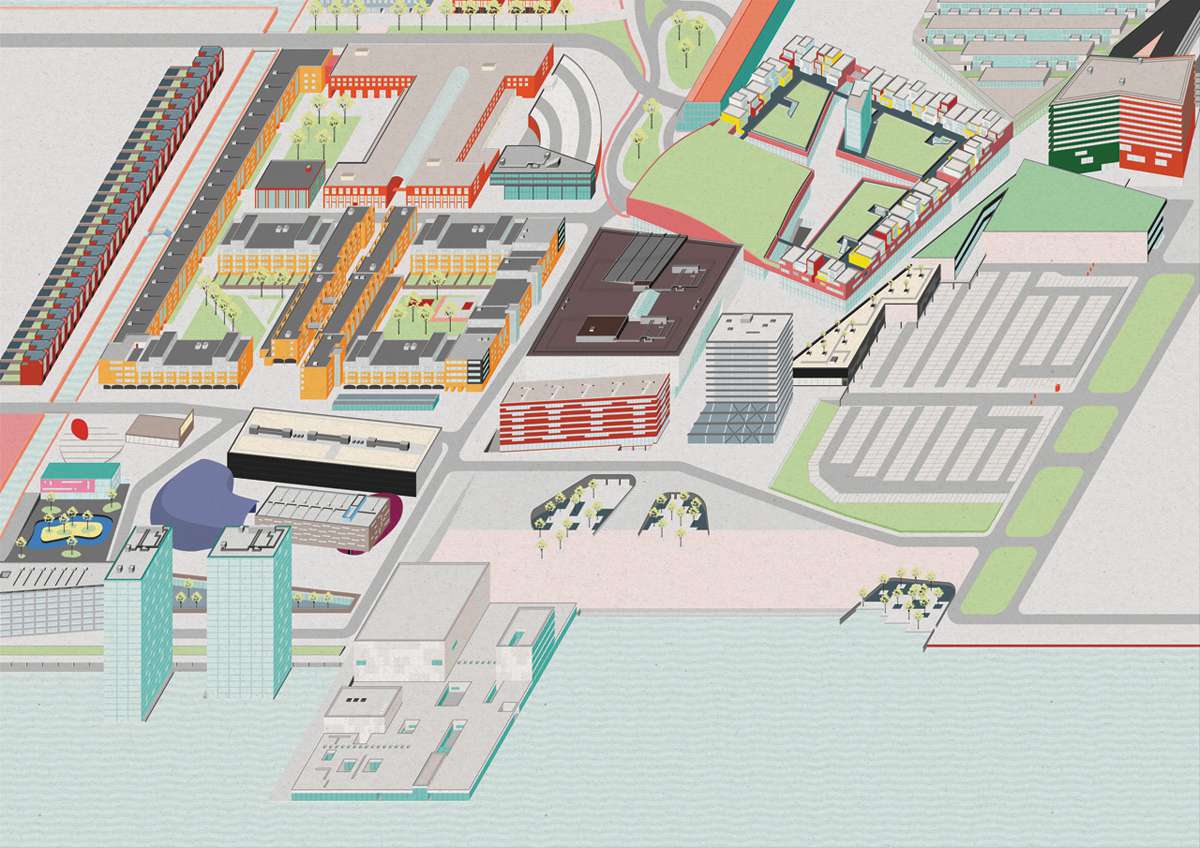
Almere Centrum
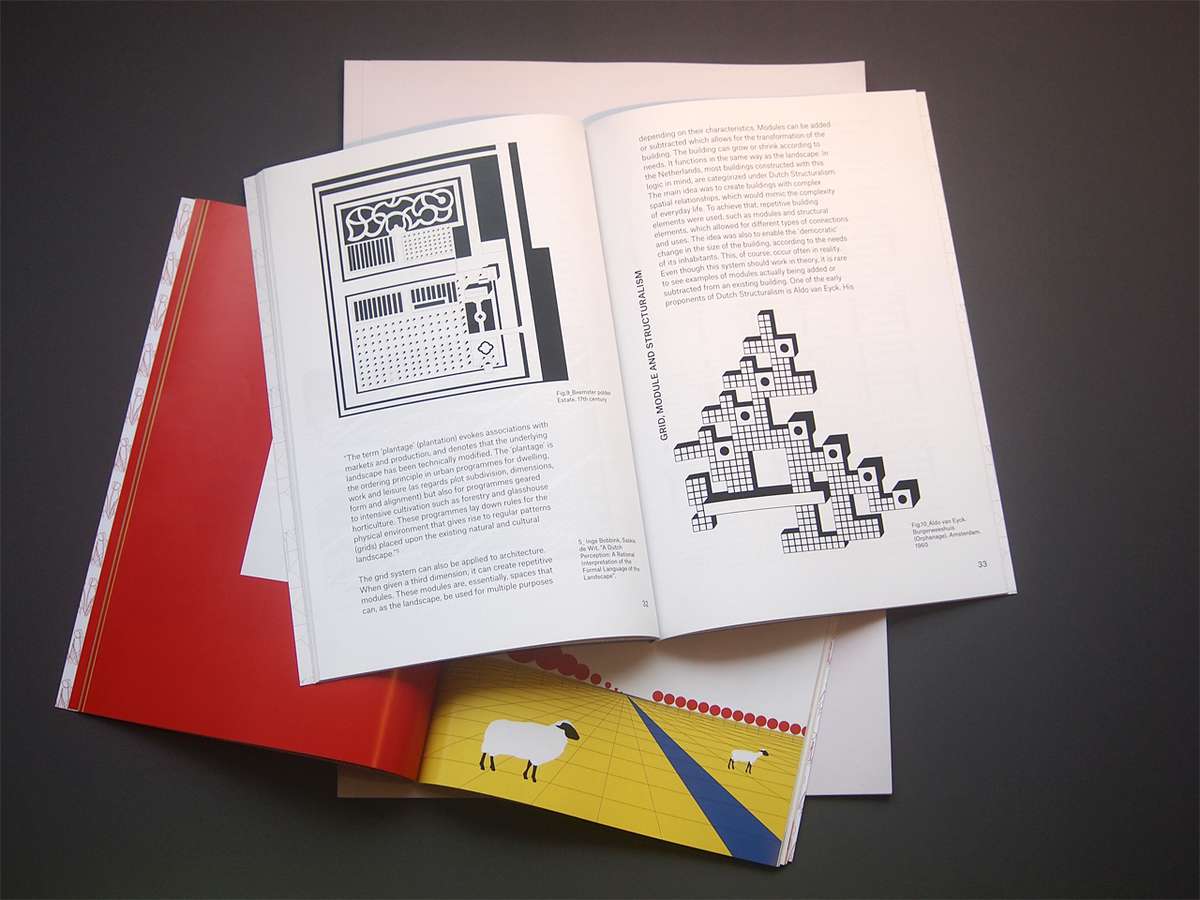
A Good Life ABC, A Flat Tale, Pitch
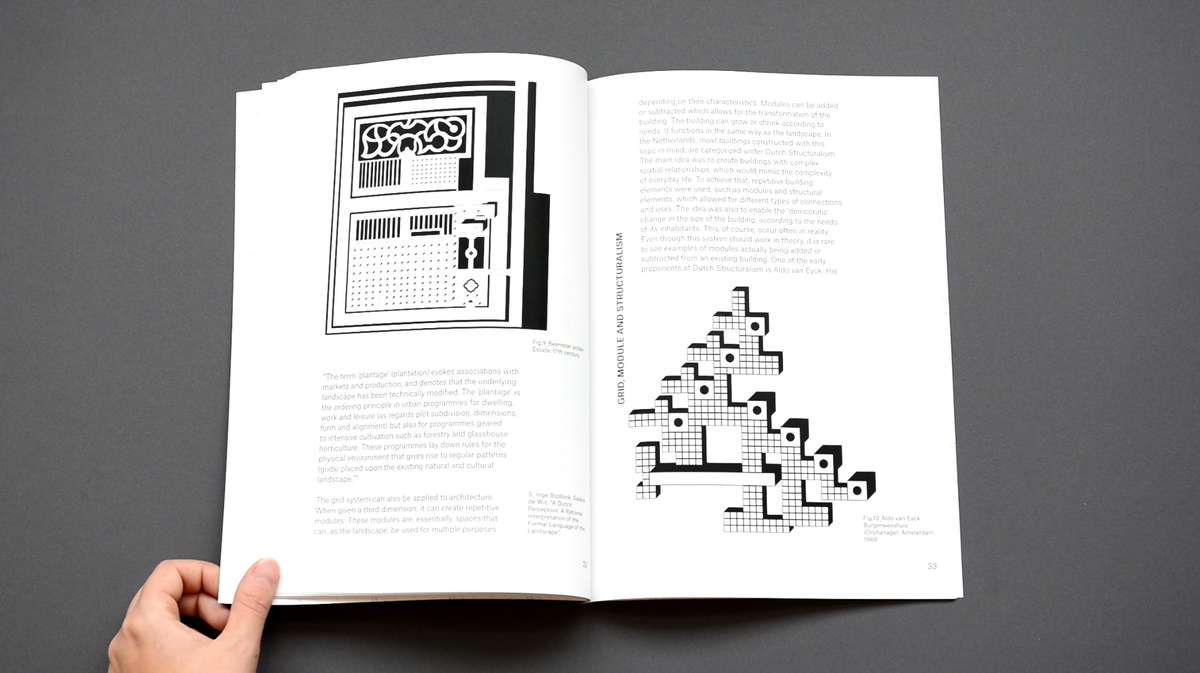
“Pitch” represents the most mature phase of developing an architectural idea. It uses architectural polemic through the format of an architectural journal. It examines Dutch architectural projects through the use of narrative. It “ends with a fictional conclusion, an interpretation of the same material, but through the words of an architectural project.”(Koolhaas, 1978) Using only text, diagrams and allusions to the project it is questioning the capacity of architectural storytelling.
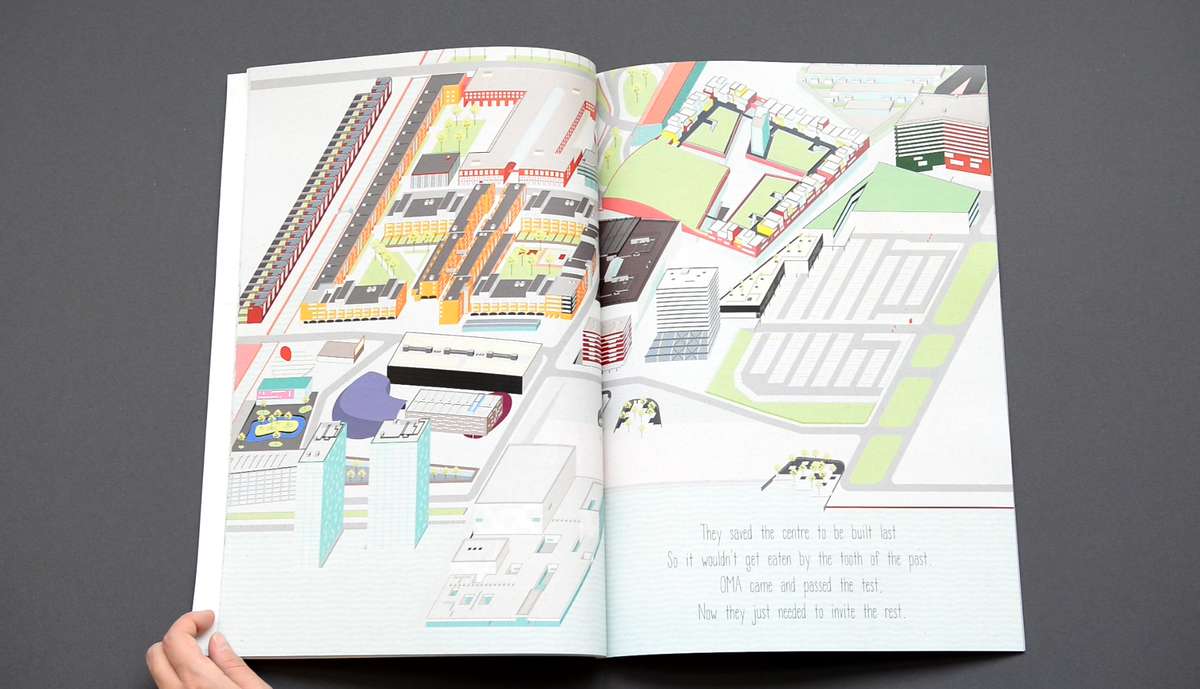
“A Flat Tale”, forms the syntax. It is an architectural picturebook which uses images to convey spatial narratives, and text to convey temporal ones. The story within the book is based on the development of Almere, the newest city on the last Dutch polder. The story is used to establish ideas that form generative theoretical elements of Dutch architecture and culture, such as concept, export, identity, welfare, subsidies, etc.
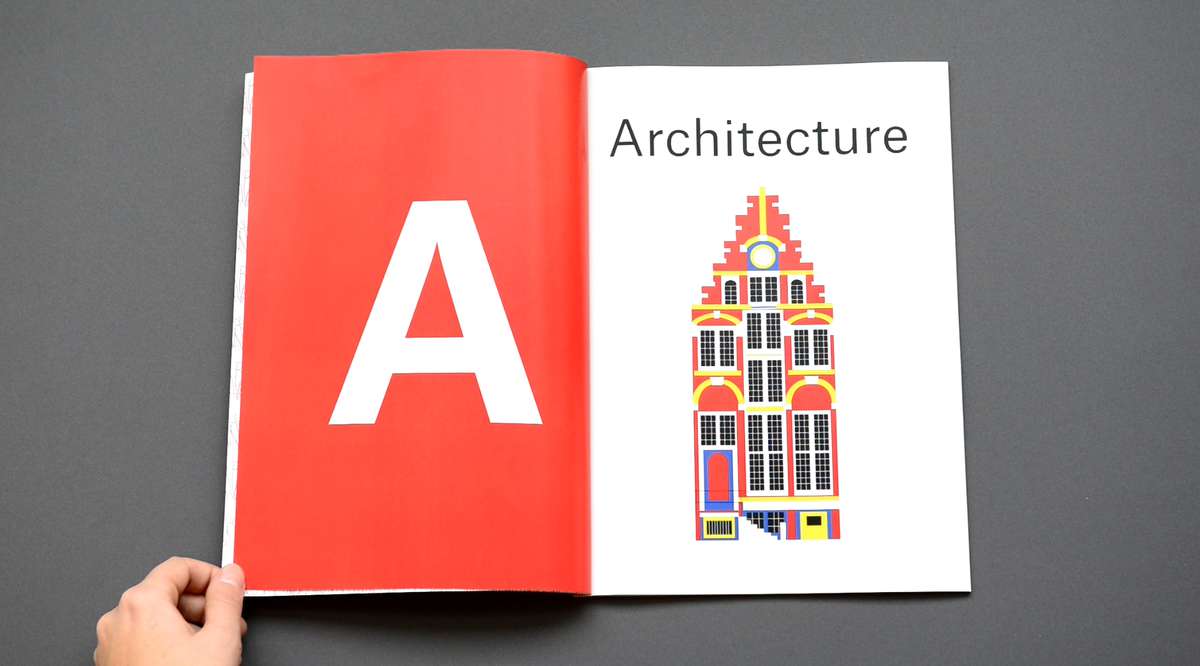
“A Good Life ABC”, establishes the grammar of Dutch architecture and the built environment. It represents the simplest way of giving and receiving knowledge. Letters of the alphabet are paired with images that form examples of objects and elements of the Dutch built environment. Drawn in a reductive manner, and with the use of only primary colours, these objects form emblematic images, striped of any specificity, that represent only themselves. They become symbols of Dutch identity.
A Flat Tale
A Flat Tale

The story has become an essential part of the project. Architecture has come to the point that the main measurement of success for projects is their compelling concept, which manifests itself through the narrative. This project problematizes the architectural narrative. Can one successfully convey an architectural idea, which is inherently visual, only through text?
By approaching architectural representation through both its lexical and visual qualities I have distilled 3 categories: the diagram and the emblematic object, the architectural design project and its narrative and the architectural essay. They represent 3 levels of complexity of architectural representation and 3 steps in the maturation of narratives and architectural projects. Based on the investigation of Dutch architectural projects and narratives, and the ways in which they are most often represented, they represent the symbols, a depiction,reflection and a story of the construct of the good life in the Netherlands.

Almere Centrum
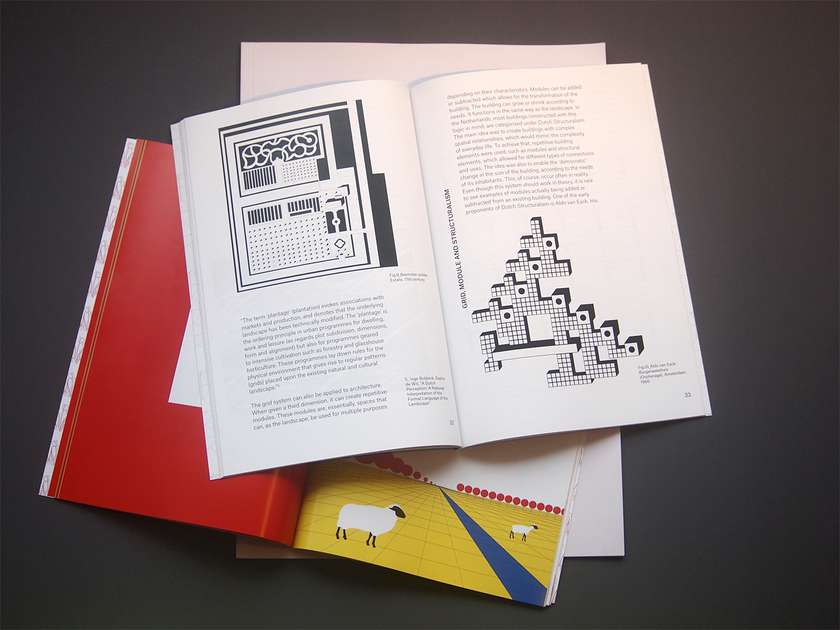
A Good Life ABC, A Flat Tale, Pitch
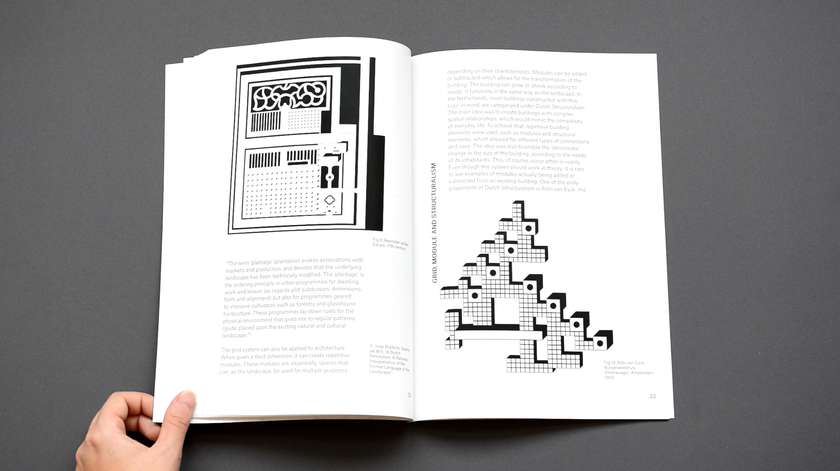
“Pitch” represents the most mature phase of developing an architectural idea. It uses architectural polemic through the format of an architectural journal. It examines Dutch architectural projects through the use of narrative. It “ends with a fictional conclusion, an interpretation of the same material, but through the words of an architectural project.”(Koolhaas, 1978) Using only text, diagrams and allusions to the project it is questioning the capacity of architectural storytelling.

“A Flat Tale”, forms the syntax. It is an architectural picturebook which uses images to convey spatial narratives, and text to convey temporal ones. The story within the book is based on the development of Almere, the newest city on the last Dutch polder. The story is used to establish ideas that form generative theoretical elements of Dutch architecture and culture, such as concept, export, identity, welfare, subsidies, etc.
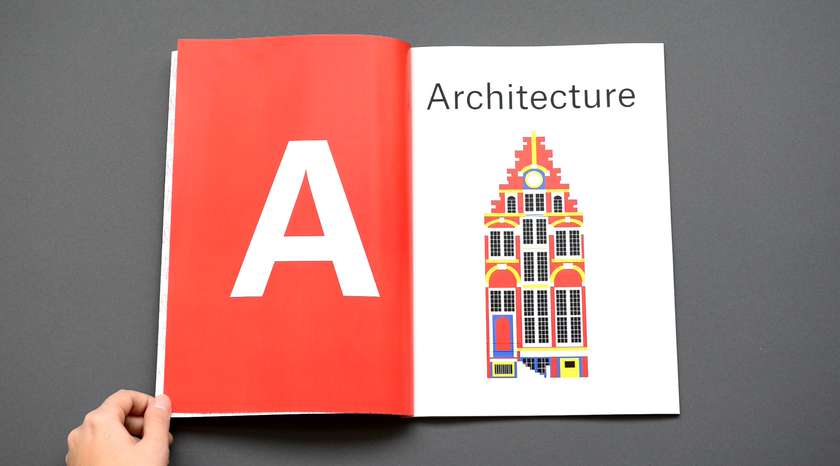
“A Good Life ABC”, establishes the grammar of Dutch architecture and the built environment. It represents the simplest way of giving and receiving knowledge. Letters of the alphabet are paired with images that form examples of objects and elements of the Dutch built environment. Drawn in a reductive manner, and with the use of only primary colours, these objects form emblematic images, striped of any specificity, that represent only themselves. They become symbols of Dutch identity.